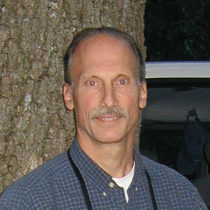Forum Replies Created
-
AuthorPosts
-
July 17, 2010 at 8:30 pm #174061
 Roger BisbeParticipant
Roger BisbeParticipantI have found over the years that design ideas evolve from a lot of my practical experiences from implementing projects. And I don’t think this has limited my creative thinking, but rather helped me to explore new concepts. Having a real understanding how “things-go-together” and relate & react with one another (especially over time) spawns new ideas as well as variations to improve upon current ones.
I would also say that presentations become more effective with a practical background. I always include remarks as to how things are done along with the usual aesthetic and functional benefits of the design.
I would encourage anyone in design to seek knowledge (and/or experience) as to how projects (of all types) actually happen.
Roger
January 4, 2010 at 5:12 pm #171859 Roger BisbeParticipant
Roger BisbeParticipantI would just like to add to Andrew’s comments with regard to the profession in general being very diverse. Isn’t it so that today most titles by themselves can represent a broad spectrum of specialties and disciplines. And, to me, this is OK. It allows practitioners an opportunity to differentiate themselves within the general profession, and it allows consumers to appreciate the benefits of particular expertise. This falls in the realm of “positioning” with regard to marketing. It is your niche and identity which states clearly what you do and do well. Today, more than ever, this is critical.
August 11, 2009 at 9:26 pm #173371 Roger BisbeParticipant
Roger BisbeParticipantBecause I design and manage my projects, I actually gather my own topograhic data as part of the design process. I simply include this “work” in my design fee, but I don’t necessarily broadcast it to my clients because they would view it as redundant to part of what the civil engineer is doing. I do this because I know what aspects of the topo. are particularly important to my planning and I can get extremely detailed (and accurate) on these measurements. Also, typically I work with a civil engineer I am familiar with, and although I would not call these relationships collaborative, I do confer with them before and during the design process. If you have supportive measurements to your design proposal arrange a meet with the engineer and discover why he or she feels it won’t work.
Overall I make every effort to work with people I have had past experience with. And even for those that are new contacts for me, but are involved with the project, I try to make contact with them as early as possible just to introduce myself, talk a bit about the client and project, and see if there’s any reason to interact. All these things help with the overall “flow of things,” but of course you can never totally prepare yourself for all the different circumstances and “personalities” that go along with them.
July 31, 2009 at 12:41 pm #173603 Roger BisbeParticipant
Roger BisbeParticipantI’ll ditto the comment by Andrew that field experience in terms of overseeing and monitoring projects is important. To truly understand the relationship of all elements in the landscape you must engage in the process of concept, to design, to implementation, to performance and sustainability. In my opinion, any prospective employer or client that sees you have collective experience in these aspects should be confident in your ability.
July 13, 2009 at 11:17 pm #173709 Roger BisbeParticipant
Roger BisbeParticipantI too use my yard as a testing ground for plant material. 30 years in the trade and I learn something new everyday, particularly with plant life. If you just have a small plot, begin to experiment with all the herbaceous plants out there. Most of their characterisitics will manifest themselves in a relatively short period of time – you could then change them out and try something different. What you learn from this “test plot” would be so valuable in your design work.
May 22, 2009 at 1:20 am #174238 Roger BisbeParticipant
Roger BisbeParticipantThank you Fernando for taking the time to respond. I really need a simple fix for what I intend to do. At this point in my career all my clients are referrals and my illustrations do not have to be so exact. During a presentation I’ll do simple perspective sketches if my client is struggling to visualize my plan drawings, or perhaps I’ll illustrate options to help inspire a decision (e.g. a shade tree selection where various forms are possible). After seeing several demonstrations, I thought an imaging application could help with this task.
I’ll continue to do more research before making any decision. In the meantime my simple free-hand sketches do the trick.
Thanks again,
Roger -
AuthorPosts


